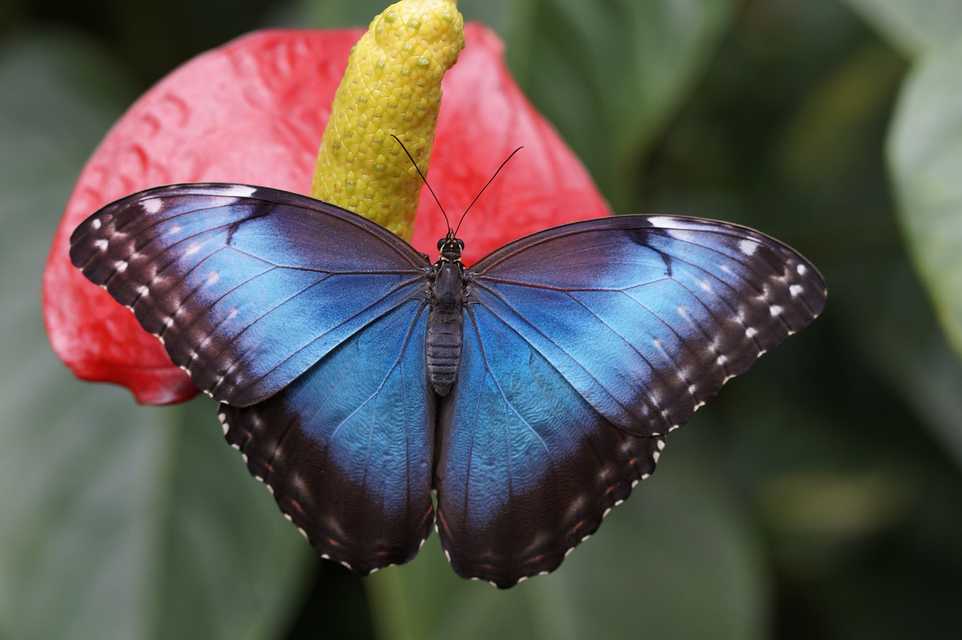
How Our Fascination with Butterflies Started
Chuck and I have been married for 34 years and spend a lot of our time walking in the great parks and nature areas here in Central Florida. Our lives changed when I saw a butterfly laid an egg on a plant. I decided to bring the egg home and try to nurture it to adulthood by setting up a Butterfly Nursery inside the house. I have introduced Gulf Fritillary and Viceroy Butterflies into our yard where there weren’t any before. I have been doing this for two years, now. The nature trail where we found the butterfly egg that started it all, we call it Butterfly Lane.
The Nursery
My butterfly nursery has three “rooms”: the kindergarten, where I keep butterfly eggs and the very, very small, newly hatched caterpillars, the second area, the playground, is where I keep the larger ‘pillars until they become chrysalises, and the last area, the morphing station, is where I keep all the chrysalises until they hatch.
The Kindergarten
I keep the eggs I find in small plastic container. When I find an egg to bring home, I get either the whole sucker shoot that the egg is on or a cutting with at least six other leaves on it. The suckers will stay fresher longer and often will root. The cuttings stay fresher than just one leaf, and the cuttings will sometimes root, also. I keep the water for the plants fresh and I use small, tall bottles to minimize the area where the little ‘pillars might fall into the water. The best containers are the water tubes that florists use to keep single flowers fresh because the cap on the tube fits closely around the stem. The only problem with the tubes is that they work well for the cuttings but the sucker plants are usually too big for them. I don’t put the little ones in with the bigger caterpillars because the big ones will eat across a leaf and a piece of the leaf might fall to the bottom of the container. If a little one fell, I might not rescue it in time. I have even had larger caterpillars chew through the leaf they’re on and fall, thump, to the bottom of the container. So, after my little ‘pillars have molted several times, then I move them over to the area where I keep the big boys. Eggs and ‘pillars are your starting point. We have harvested Gulf Fritillary and Viceroy Eggs and caterpillars from our walks on the nature trail. My success rate for Gulf Fritillaries this season is almost 100%. The success rate in the wild is only about 40%. We release adult butterflies back where we initially harvested the eggs and into our yard. I found a place where I can get FREE Monarch and Viceroy Eggs. I plan to buy Zebra Longwing eggs next season. The host plant for both the Gulf Fritillary and Zebra Butterflies is the passion vine. The Gulf Fritillaries like the vine to be in the sun, but the Zebras prefer the vine growing in the shade. We already have the passion vine established in our yard; we just need to plant some cuttings in a shady area. There is place where you can get free butterfly eggs at a butterfly farm near Gainesville. (GO GATORS!)
The Playground
The playground area consists of two plastic containers, a smaller one inside a larger one. The smaller container is where I keep the caterpillars, their food and the jungle gym. The top picture is the jungle gym before I removed all the seed pods and trimmed up the branches. The lower picture is of the inner container with leaves to eat and the jungle gym to climb on. One ‘pillar decided to “chrysalize” on the container rather than on the branches provided. The sucker plants or cuttings are in tall jars or bottles with small mouths to minimize the risk of drowning. I change the water every day or so and I change the plants when they start to wilt or when the ‘pillars munch them down to skeletons. The smaller container is lined with paper towels to make cleanup easier. I clean out the frass (caterpillar poop) every other day and make sure the leaves touch the jungle gym, where the ‘pillars can climb and make their chrysalises. The larger container acts as a barrier of sorts to keep the ‘pillars confined. Occasionally, a caterpillar will try to escape or make its chrysalis on the container itself, rather than on the branch provided. My nursery is not enclosed so we can watch all the miraculous changes the eggs and caterpillars go through to become butterflies. Below are a couple of ‘pillar that went off the reservation: One made its chrysalis on the edge of a piece of paper taped to end of the book case and the other, on the wall behind the desk. As I wrote this, two large Viceroy caterpillars were in a face off that lasted 15 minutes. Neither one would give up its position on the willow leaf they were on. Later, they decided to make their chrysalises on separate stems. When the leaves get dry, I can actually hear the caterpillars chewing!
